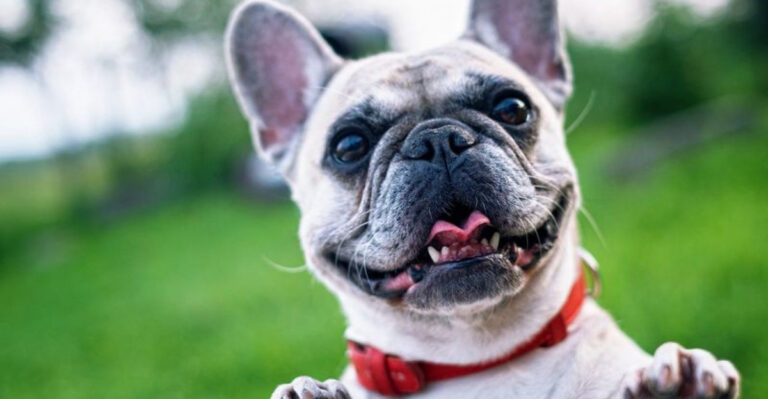22 Everyday Items That Are Toxic To Dogs
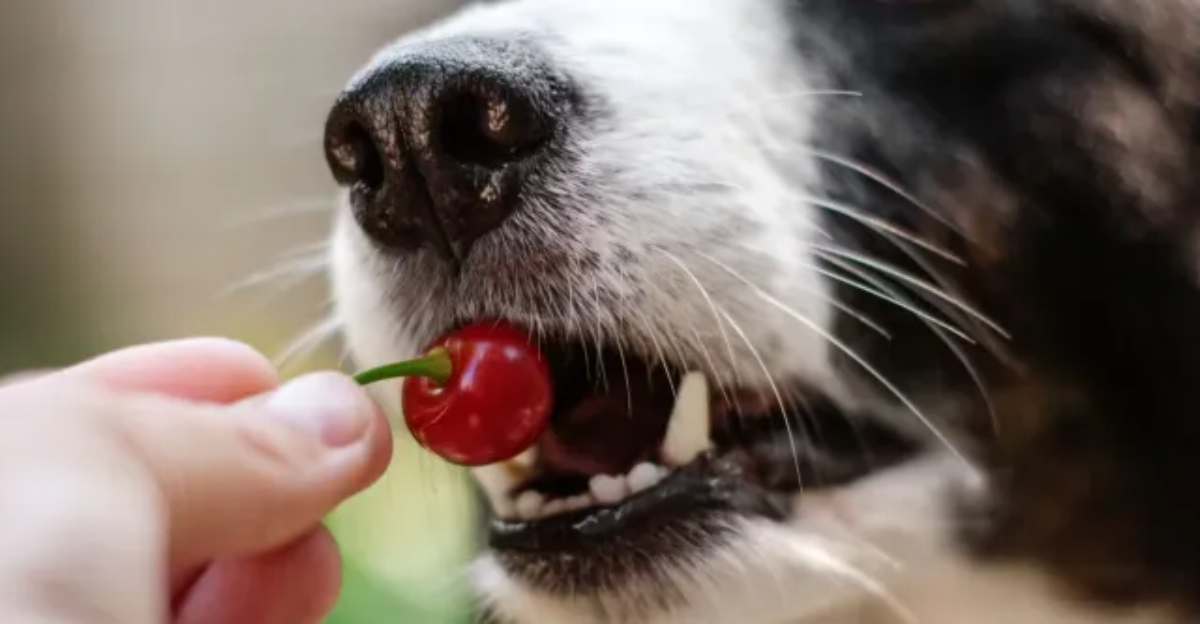
As much as we love to spoil our furry companions, it’s important to remember that many everyday household items can be harmful, or even deadly, to dogs.
From common foods to household products, our dogs are often at risk from things we may not think twice about.
In this guide, we’ll highlight 22 everyday items that pose serious health threats to your dog, helping you protect your beloved pet and keep them safe from hidden dangers around the house.
1. Chocolate
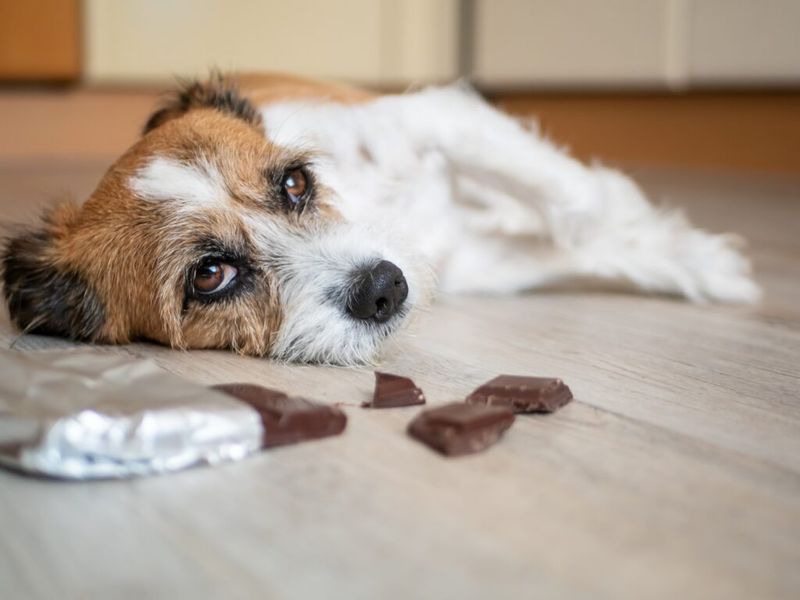
Ah, chocolate! A delight for humans, but a danger for dogs. The culprit is theobromine, a compound that can cause a whirlwind of problems for your pup. Dark chocolate contains the highest levels, making it the most dangerous of the lot.
Even a small amount can lead to vomiting and diarrhea. Larger quantities may cause more severe symptoms, like tremors and seizures. It’s always best to keep this sweet treat out of paw’s reach and educate guests about its dangers.
If Fido manages a sneaky taste, a quick call to the vet is prudent. They might recommend inducing vomiting or rushing your pooch for an examination. Prevention is sweet; ensure chocolate remains a strictly human indulgence.
2. Grapes And Raisins

Grapes and raisins may seem innocuous, but they carry a hidden threat to dogs. Even a handful can lead to serious kidney damage, which can be life-threatening if untreated. The exact toxin remains a mystery, but the effects are indisputable.
Symptoms can sneak up quickly, often within hours. Vomiting, lethargy, and decreased appetite are common initial signs. As the situation worsens, your dog may experience kidney failure, which requires immediate medical attention.
To err on the side of caution, always keep these fruits out of reach. If your dog does consume them, time is of the essence. Contacting your veterinarian promptly can make all the difference.
3. Onions And Garlic
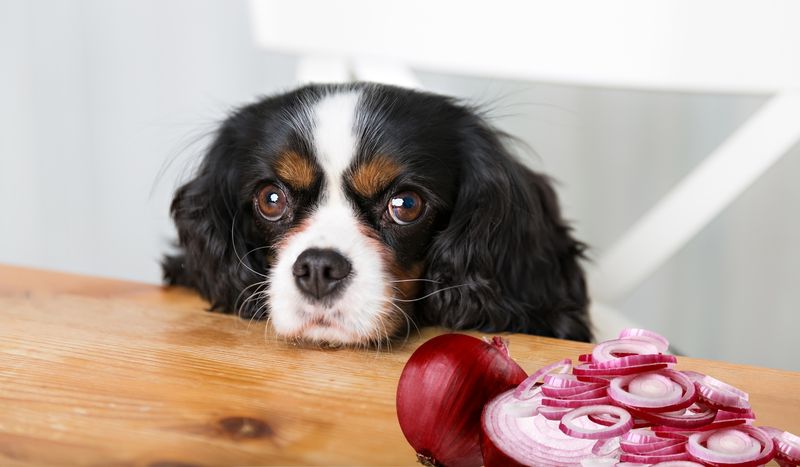
Onions and garlic add flavor to our dishes but can be a recipe for disaster for dogs. These alliums can damage red blood cells, leading to anemia, which can be quite severe.
Cooking doesn’t mitigate their effects, so whether raw, cooked, or in powdered form, they remain hazardous. Symptoms might not appear immediately, with weakness and breathlessness signaling trouble days later.
If your dog sneaks a taste, monitor them closely and consult your vet if any symptoms appear. Be mindful of ingredients in leftovers and human foods you share with pets.
4. Xylitol
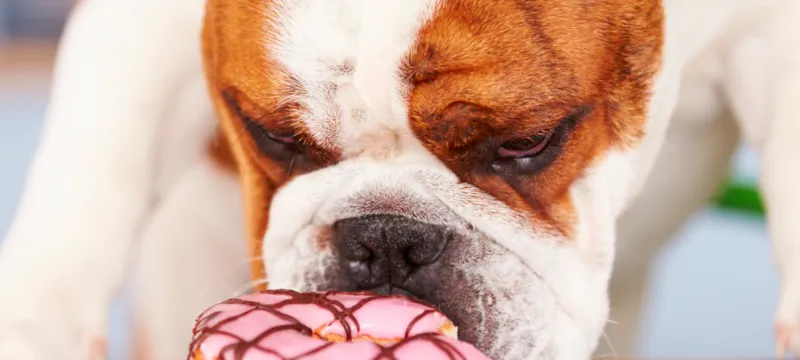
Xylitol, a popular sugar substitute, poses a sweet danger to dogs. Found in sugar-free gum, candies, and some peanut butters, it can cause a rapid release of insulin in dogs, leading to hypoglycemia.
Symptoms such as vomiting, lethargy, or loss of coordination may appear within minutes. Without quick intervention, xylitol can lead to seizures or liver failure, both of which can be fatal.
To safeguard your pet, scrutinize labels for this ingredient. If you suspect ingestion, swift action with veterinary support is crucial to mitigate serious health risks.
5. Alcohol
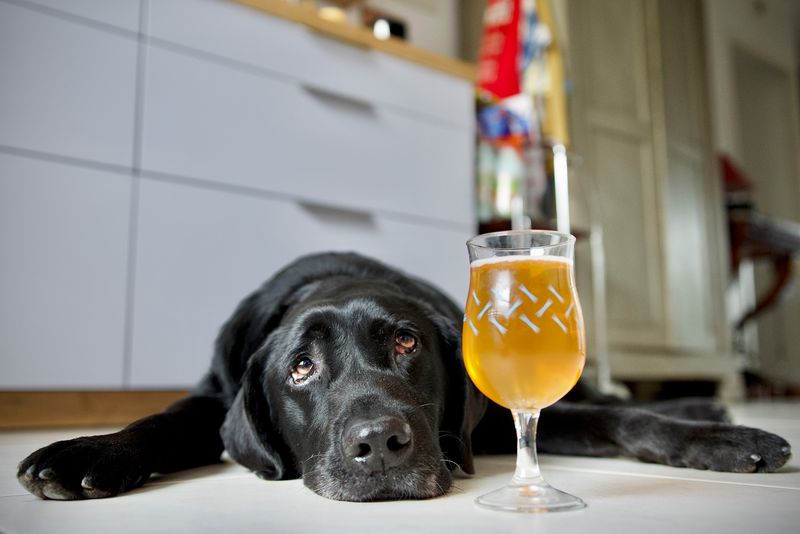
Alcohol isn’t just for adults; even small amounts can intoxicate dogs, leading to dire consequences. Their smaller size makes them more susceptible to alcohol poisoning compared to humans.
Symptoms of alcohol ingestion can include vomiting, disorientation, and difficulty breathing. In severe cases, it may cause a dangerous drop in temperature and blood sugar levels.
To avoid a tipsy terrier, ensure that alcoholic beverages are always out of reach. Party guests should be aware of the potential hazards, keeping celebratory drinks well away from wagging tails.
6. Avocado
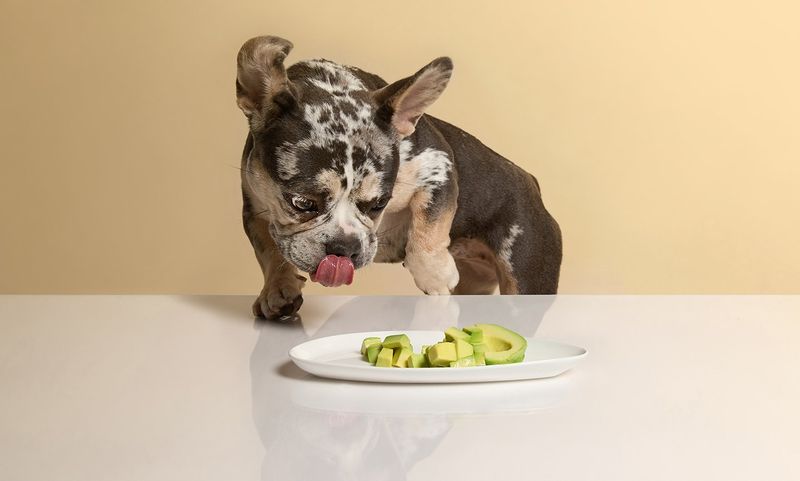
Avocado is a healthy snack for humans but not for dogs. The fruit contains persin, a fungicidal toxin that can cause vomiting and diarrhea in dogs.
Though the flesh is less toxic, the pit poses a choking hazard or intestinal blockage risk. Leaves and bark are especially harmful, so be cautious about garden plants too.
For those with avocado-loving tendencies, keep your guacamole to yourself and ensure your garden is dog-proofed against these creamy delights.
7. Coffee And Caffeine

Caffeine is a great wake-up call for humans but spells trouble for dogs. Present in coffee, tea, and some sodas, caffeine affects dogs more intensely than humans.
Symptoms of caffeine poisoning can appear quickly, including restlessness, rapid breathing, or heart palpitations. High doses may lead to muscle tremors or seizures.
Keep caffeinated beverages and products out of reach, and be wary of sharing even the smallest sip with your pet. When it comes to caffeine, it’s best to keep it strictly human.
8. Macadamia Nuts
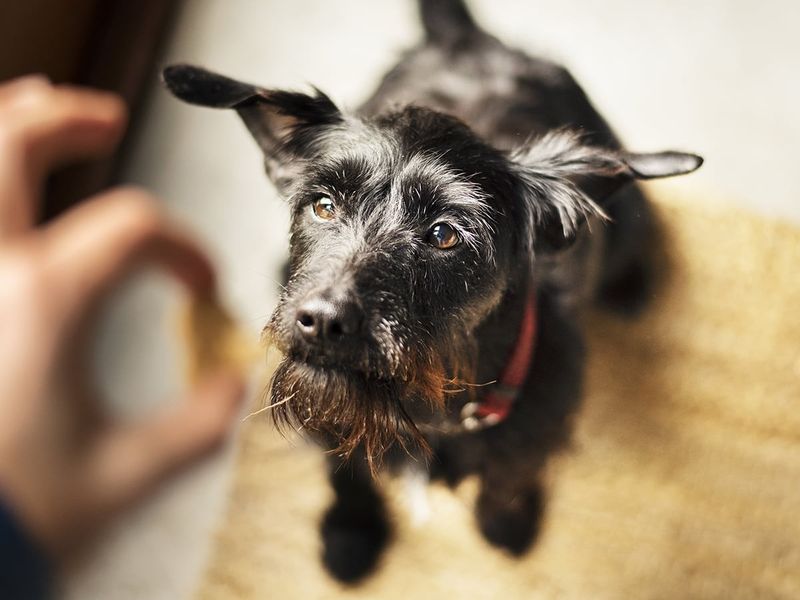
Macadamia nuts offer a rich, buttery taste for humans but are a no-go for dogs. Even a small amount can lead to a series of unpleasant symptoms in dogs.
Dogs may experience weakness, vomiting, and tremors after ingestion. Symptoms typically last 12 to 48 hours, but it’s always wise to consult a veterinarian if ingestion occurs.
If you’re indulging in these creamy nuts, keep them far from your furry friend. Sharing isn’t caring when it comes to these toxic treats.
9. Yeast Dough
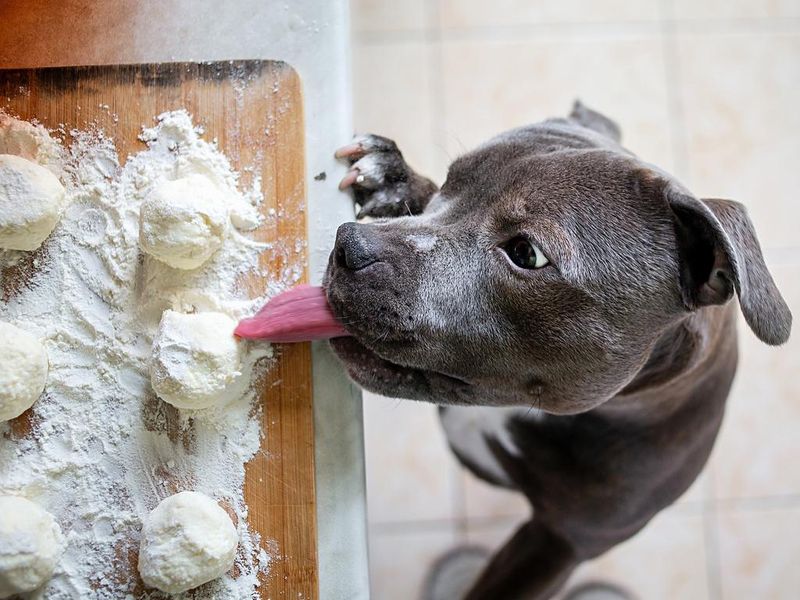
Baking bread? Keep that dough out of reach! Yeast dough can expand in a dog’s stomach, leading to painful bloating or even a life-threatening condition known as gastric-dilatation volvulus.
Moreover, as the yeast ferments, it produces alcohol, which can intoxicate your dog. Symptoms include distended abdomen, vomiting, or unsteadiness.
When baking, ensure that all dough is left to rise out of reach. A treat for you should never be a trick for them; keep canine companions away during baking marathons.
10. Artificial Sweeteners
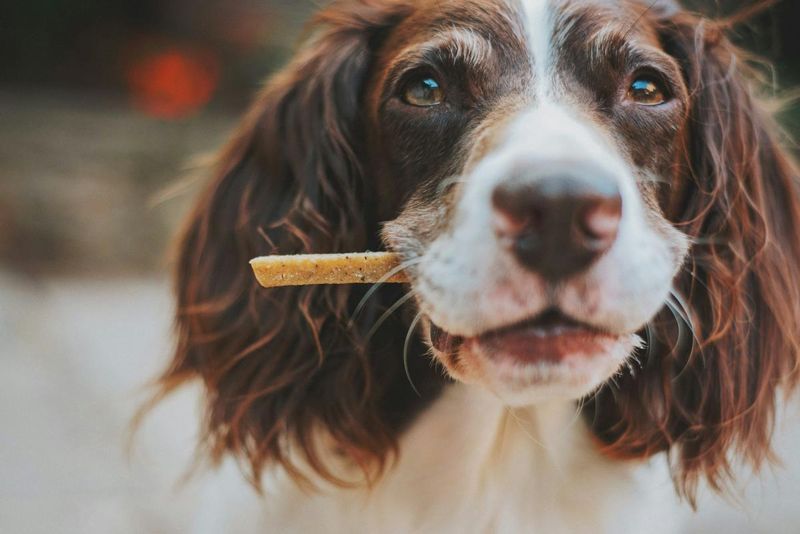
Artificial sweeteners, especially xylitol, are hidden dangers in many sugar-free products. While great for cutting calories, they pose a serious threat to dogs.
Xylitol can cause a rapid insulin release in dogs, leading to hypoglycemia and potential liver failure. Symptoms might include vomiting or difficulty walking, appearing quickly after ingestion.
Always check the ingredient list of products like gum or candy, and educate family members about these sweet dangers. When in doubt, keep sugar-free items safely stored away.
11. Raw Meat And Fish
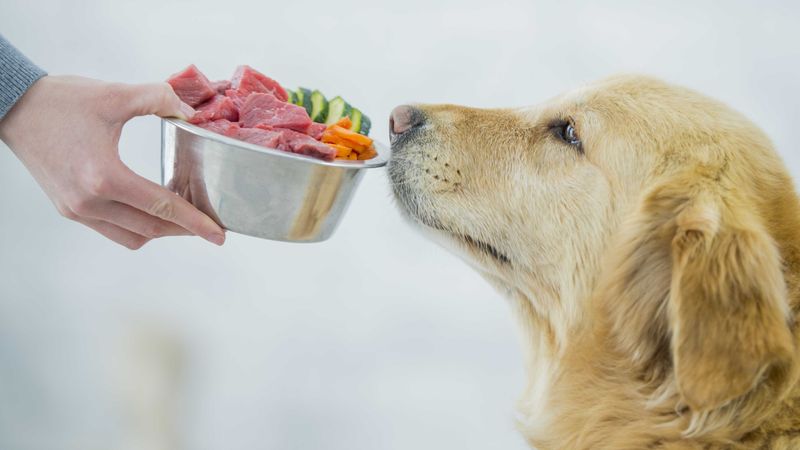
Raw meat and fish might align with a natural diet, but they can harbor bacteria and parasites harmful to dogs. Common culprits include salmonella and listeria.
Feeding your dog a raw diet requires vigilance to ensure meat is fresh and handled safely. Symptoms of bacterial infection can include vomiting and diarrhea, demanding a vet’s attention if persistent.
If you opt for raw feeding, consult your vet about safe practices. Balance the benefits and risks to maintain a healthy diet for your dog.
12. Cooked Bones
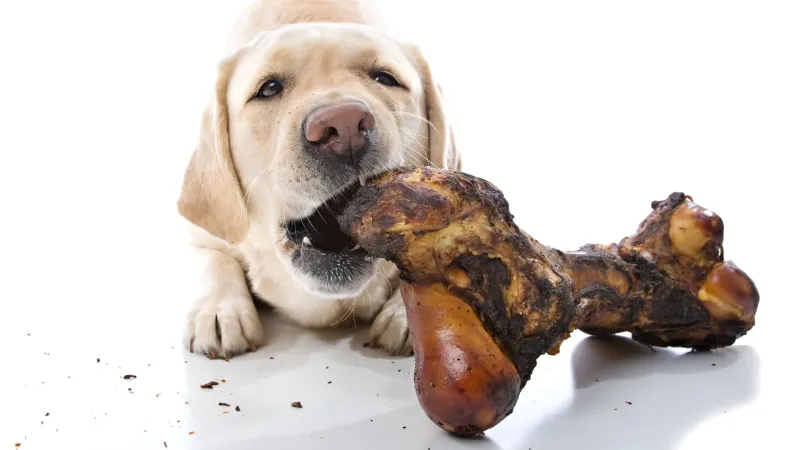
While a dog’s natural instinct may be to chew on bones, cooked ones are a different story. They can splinter easily, causing internal injuries or obstructions.
Signs of trouble might include vomiting, lethargy, or difficulty passing stools. If your dog swallows a bone, monitoring them closely is essential.
Stick to raw bones or specially designed chew toys, ensuring they are appropriate for your dog’s size and chewing habits. Chewing should be safe, fun, and free of risks.
13. Apple Seeds
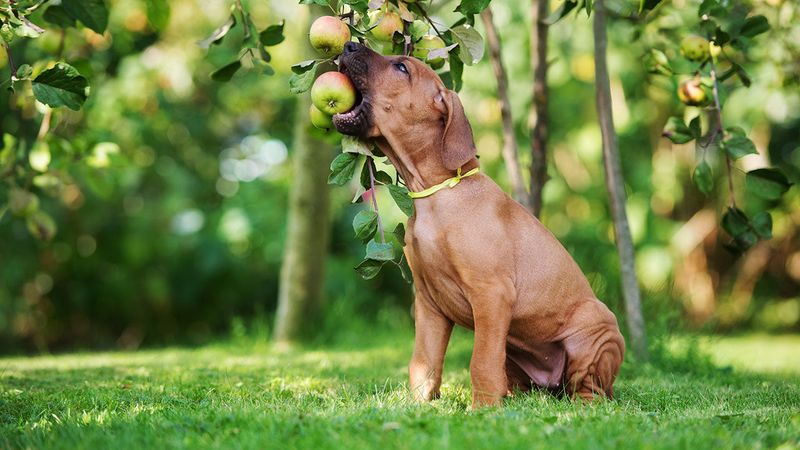
An apple a day keeps the doctor away, but not for dogs if seeds are involved. Apple seeds contain cyanide, a toxin that poses a risk when consumed in large quantities.
Symptoms of cyanide poisoning can include difficulty breathing or convulsions, though a few seeds are unlikely to cause harm. It’s best to remove the core before sharing this crunchy fruit.
If your dog shows concerning symptoms, contact your veterinarian. Otherwise, enjoy apple slices together, sans seeds, for a refreshing treat.
14. Milk And Dairy
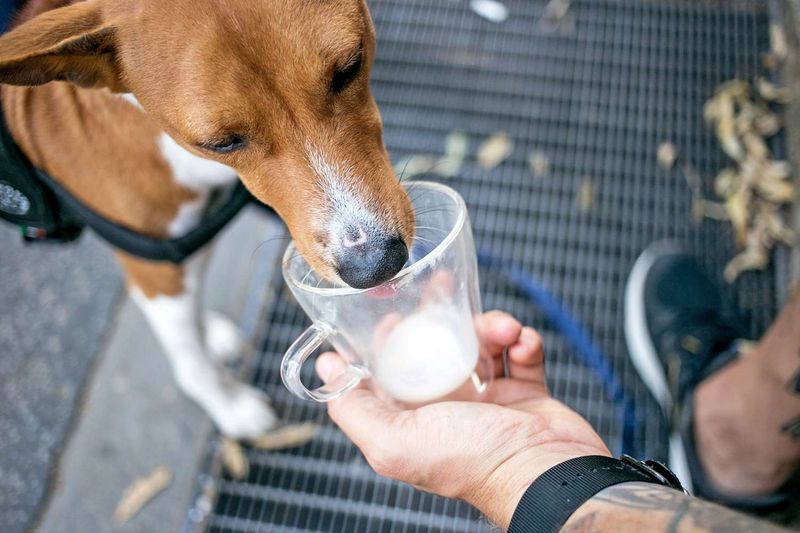
While many humans relish a glass of milk, dogs don’t always digest dairy well. Lactose intolerance is common, leading to upset stomachs and digestive woes.
Signs of intolerance may include gassiness, diarrhea, or abdominal discomfort. Some dogs tolerate small amounts, but it’s wise to offer dairy sparingly.
If your dog enjoys cheese, opt for lactose-free varieties or monitor their reaction to regular dairy. A little indulgence might be okay, but moderation and observation are key.
15. Cherries

Cherries, while sweet and juicy, have a dark side for dogs. The pits contain cyanide, which can be harmful if ingested in quantity.
Symptoms of cyanide poisoning include difficulty breathing and bright red gums. Though unlikely from a single pit, it’s a risk not worth taking.
If you enjoy cherries, ensure pits are removed before sharing with your pet. Better yet, stick to dog-safe fruits to satisfy your pet’s sweet tooth without the risks.
16. Salt And Salty Foods
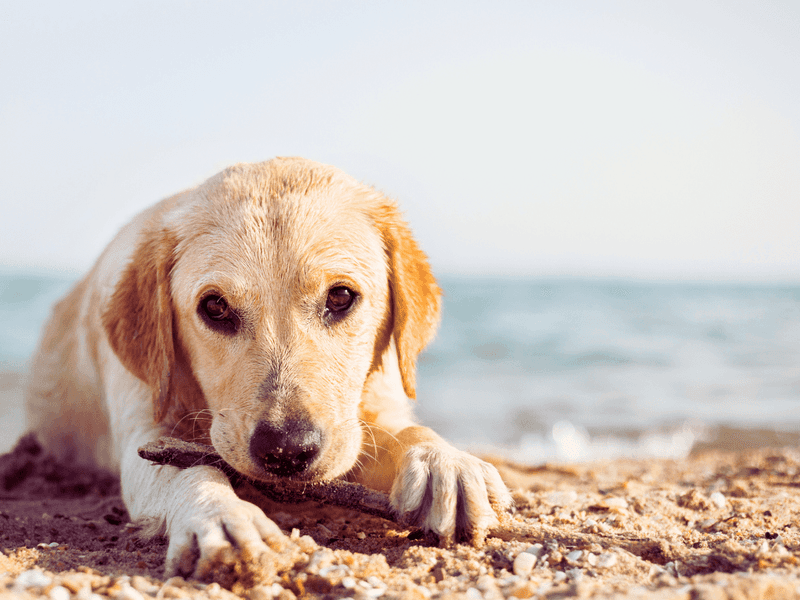
A pinch of salt enhances flavor, but too much spells trouble for dogs. Salty foods can lead to excessive thirst, urination, and sodium ion poisoning.
Symptoms of salt poisoning include vomiting, diarrhea, or even seizures. To keep your pet safe, avoid feeding them salty snacks and monitor their salt intake.
Keep the chip bowl on the table and out of paw’s reach. Encourage guests to resist sharing salty treats to ensure your dog’s health doesn’t take a back seat.
17. Raw Eggs
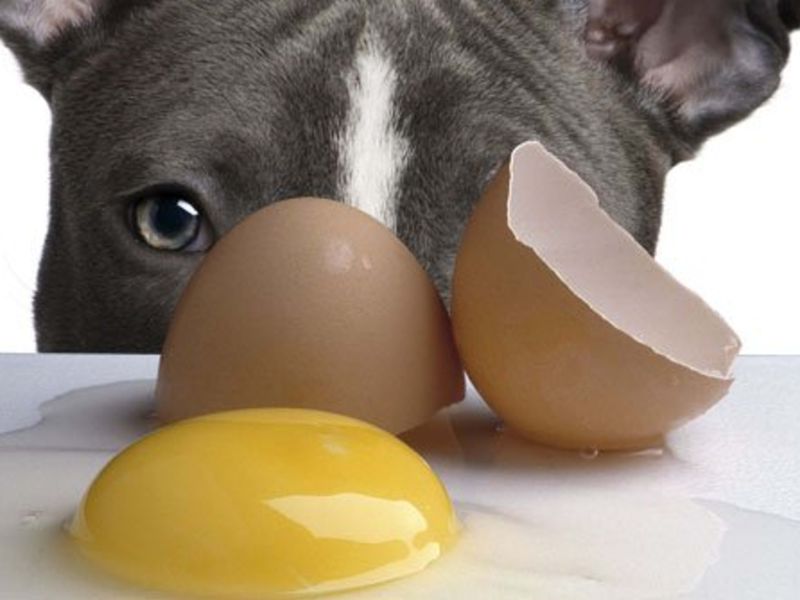
Raw eggs offer protein but come with risks for dogs. They can harbor salmonella or e. coli, leading to illness that requires veterinary care.
Symptoms of bacterial infection include vomiting, diarrhea, or lethargy. While some advocate for raw diets, caution is advised when handling and storing eggs.
Consider cooking eggs before feeding, providing protein without the risk of infection. Raw or cooked, monitor your dog for any adverse reactions to ensure a happy, healthy pet.
18. Wild Mushrooms
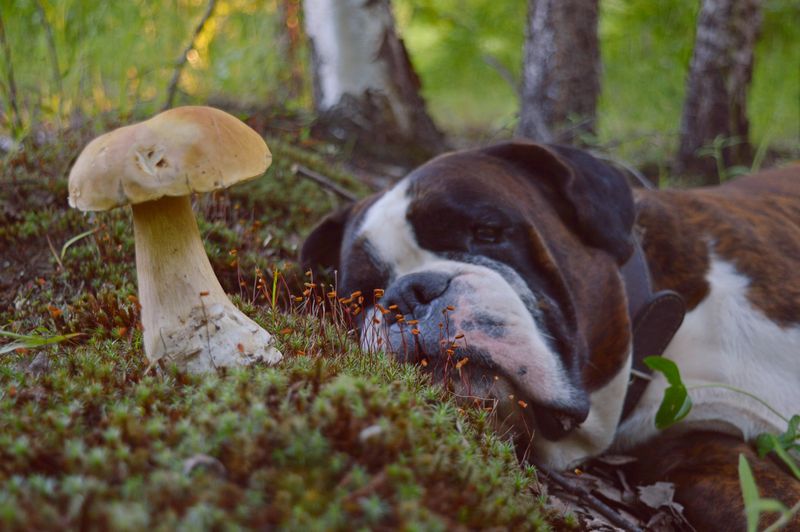
Foraging in the woods can be dangerous if your dog finds mushrooms. While some are safe, others are toxic and can lead to serious health issues.
Symptoms of mushroom poisoning include drooling, vomiting, and liver failure. The severity depends on the mushroom type, making quick identification and treatment crucial.
During walks, keep an eye on what your dog sniffs and nibbles. If you suspect mushroom ingestion, seek veterinary help immediately. Knowledge and vigilance are key in preventing accidental poisoning.
19. Chili Peppers
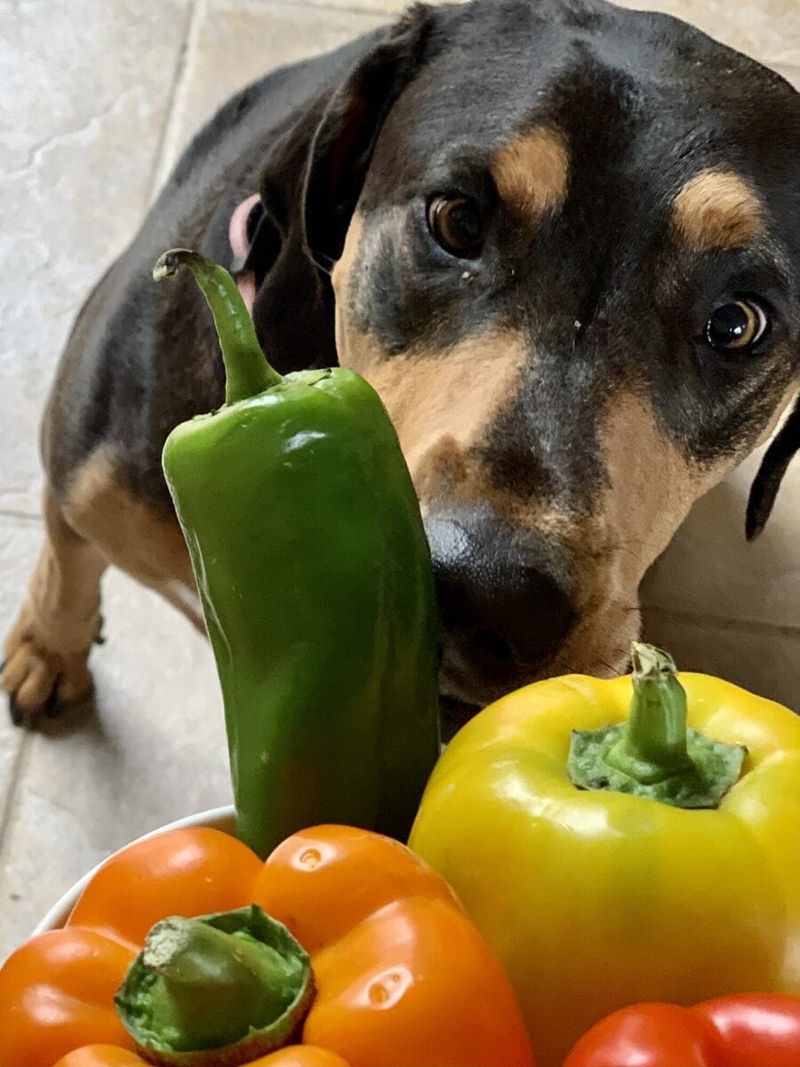
Spice might be nice for humans, but chili peppers pack a punch for dogs. Their capsaicin content can lead to irritation and discomfort for your furry friend.
Symptoms might include drooling, upset stomach, or diarrhea. Dogs aren’t equipped to handle spicy foods, so it’s best to keep these fiery treats to yourself.
If your dog gets a taste, offer plenty of water and monitor for persistent symptoms. Next time you’re cooking, ensure spicy ingredients are safely stored away.
20. Mustard Seeds
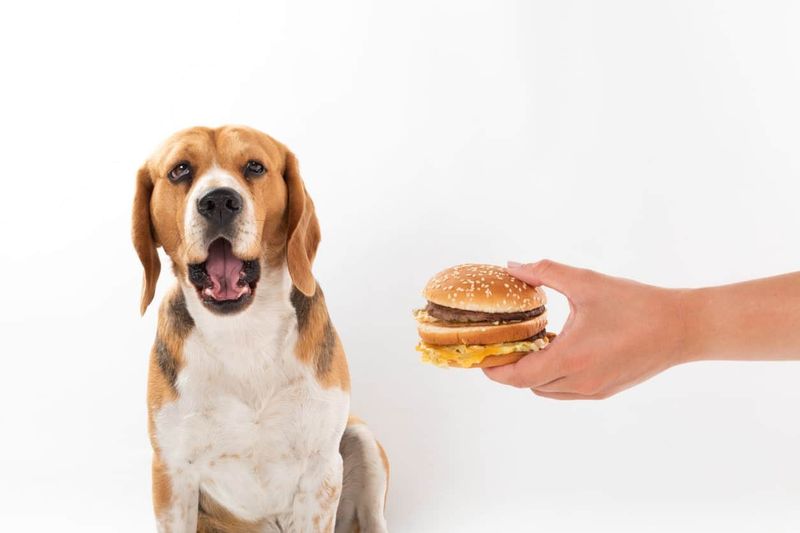
Mustard seeds are tiny but pack a big punch when it comes to dog safety. Ingesting them can lead to gastrointestinal irritation and potential toxicity.
Symptoms might include vomiting or abdominal discomfort, usually manifesting shortly after consumption. If your dog shows these signs, a vet consultation is wise.
When using mustard in your culinary creations, keep it well out of reach. While a dab on a hot dog completes the meal, it’s an ingredient best left off your dog’s menu.
21. Nutmeg
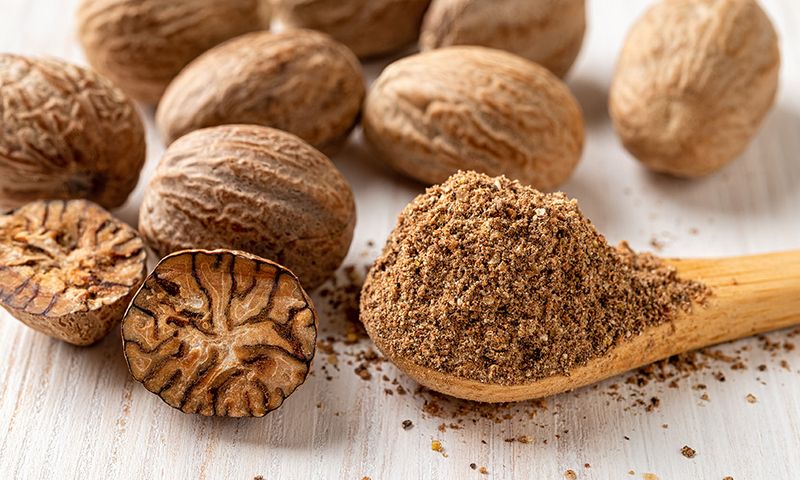
Nutmeg, a spice cherished for its warm flavor, might seem harmless in your kitchen. However, for dogs, it can be a silent threat. Its compounds, such as myristicin, can lead to severe toxicity in canines.
Symptoms like disorientation, increased heart rate, and even seizures can occur if ingested by your furry friend. Although its aromatic smell might tempt some curious dogs, keep it out of their reach.
Did you know nutmeg was once worth its weight in gold due to its rarity? Ensure it remains a valuable addition to your pantry, yet far from your dog’s curious paws.
22. Mothballs
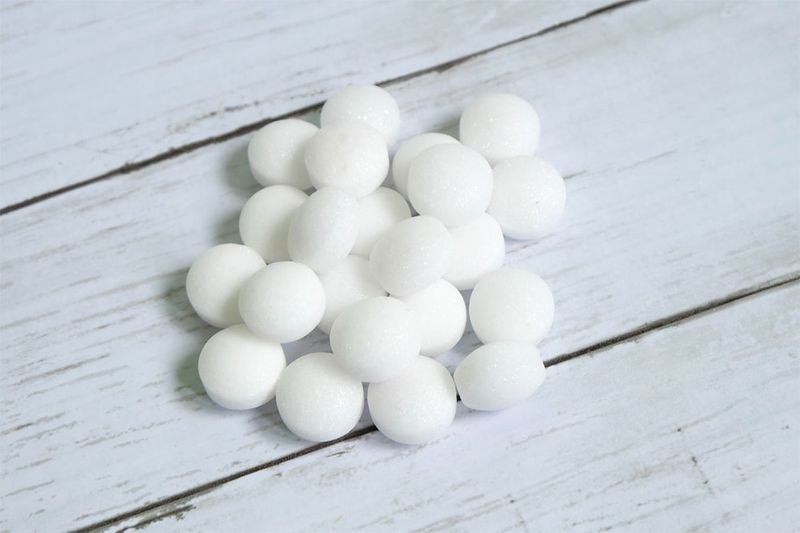
Mothballs, those small spherical protectors against moths, are toxic to dogs. Naphthalene or paradichlorobenzene, chemicals found in mothballs, can cause toxic reactions in dogs.
Ingesting even a small amount can lead to symptoms like vomiting, seizures, and respiratory issues in dogs. It’s essential to store them in safe, unreachable places.
Interestingly, mothballs’ smell, while strong to us, is even more potent to dogs, making them a greater risk. Keep those mothballs secure, preserving both your clothes and your dog’s health.


